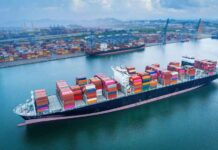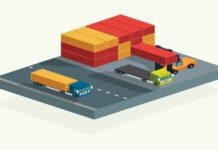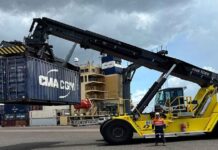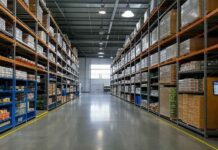In the rapidly evolving landscape of global commerce, reverse logistics has emerged as a critical element of supply chain management. Traditionally, supply chains focused on the flow of goods from manufacturers to consumers. However, the reverse movement of products—returning goods from end-users back to producers—has become equally essential. This reverse flow is driven by both environmental consciousness and economic pragmatism, offering companies a strategic opportunity to redefine sustainability while improving operational efficiency.
The Imperative of Efficient Returns Processing
At the core of reverse logistics lies the need for efficient returns processing. As e-commerce continues to grow, the volume of returned products has increased dramatically. Online purchases are returned at a much higher rate than traditional in-store buys, creating both logistical and environmental challenges. Managing these returns efficiently is not just about streamlining operations but also minimizing the environmental impact of waste generated by products that could otherwise be repaired, resold, or recycled.
Efficient returns processing is essential for handling the influx of products flowing back through the supply chain. If not managed properly, returns can cause bottlenecks, increase costs, and generate excess waste. To address these challenges, companies need to develop streamlined processes that accurately assess returned items and direct them to their next destination—whether that’s repair, resale, recycling, or disposal. By optimizing these processes, businesses can minimize their carbon footprint and enhance their overall sustainability efforts.
Advanced technologies like artificial intelligence (AI) and machine learning (ML) play a crucial role in optimizing reverse logistics. These technologies can intelligently route returned items, predict return patterns, and manage inventory more efficiently. For example, AI can be used to conduct preliminary assessments of returned goods, categorizing them based on their condition and future usability. This early-stage sorting reduces unnecessary transportation and processing, helping products move quickly through the reverse logistics pipeline to their optimal endpoints.
Investing in physical infrastructure is also key to improving returns processing. Establishing strategically located returns centers equipped with energy-efficient technologies can handle large volumes of returns while minimizing environmental impact. Automated systems, such as reusable packaging and disassembly lines, can further support sustainability by reducing waste and improving the efficiency of processing returned items.
Another aspect of returns management is the design of the products themselves. Companies that implement design-for-disassembly principles can make it easier to recycle or refurbish returned products. By designing products that are easy to take apart, companies can recover valuable components and reduce the need for new raw materials. This circular approach supports both environmental sustainability and cost savings by recapturing value from returned goods.
Additionally, companies can foster a culture of returns reduction by engaging customers in the process. Educating consumers about the importance of accurate product selection and encouraging feedback loops can lead to product improvements that reduce return rates. For example, by analyzing customer feedback, businesses can adjust sizing, improve product descriptions, and enhance images, ultimately reducing the number of returns due to dissatisfaction or mismatched expectations.
Designing for the End-of-Life
Another essential component of reverse logistics is considering a product’s end-of-life during the design stage. This strategy, known as Design for Disassembly (DfD), involves creating products with future recycling or refurbishment in mind. By making products easier to disassemble, companies simplify the recycling process, reduce waste, and extend the lifecycle of their products.
For instance, products with modular designs allow for easy replacement of parts, and the use of standardized screws or components can simplify disassembly. These design choices not only facilitate recycling but also support repair and refurbishment efforts, reducing the need for new materials and helping companies recover more value from returned goods.
Integrating DfD principles into product design aligns with the broader concept of a closed-loop supply chain. In this model, a product’s end-of-life is not the conclusion of its journey but a transition to a new phase. By designing products with the intent of reincorporating them into the supply chain, businesses can reduce their environmental impact and create new revenue streams from products that might otherwise be considered waste.
The Role of Industry Collaboration
Collaboration within industries is critical to improving the efficiency and sustainability of reverse logistics. By sharing resources such as centralized returns centers, companies can reduce costs and environmental impacts. Pooling transportation and processing resources allows for economies of scale, which helps companies reduce their carbon footprint while managing returns more effectively.
Additionally, industry-wide collaboration can lead to the development of standardized practices for reverse logistics. These standards streamline everything from packaging design to the reuse or recycling of products, making it easier for companies to adhere to best practices and ensure that their reverse logistics operations are efficient and sustainable.
Collaborating on policy advocacy is another powerful way to improve reverse logistics. When companies in the same industry join forces, they can push for regulations that support sustainable practices. This could include tax incentives for companies that prioritize recycling or the use of green technologies. Working together, businesses can help shape policies that promote sustainability while benefiting their bottom line.
Expanding collaboration beyond industries to include logistics providers, waste management companies, and even consumers can further improve reverse logistics. These partnerships can create new business models, such as take-back programs that encourage consumers to return used products for recycling or refurbishment. This approach not only enhances the circular economy but also improves operational efficiency, driving innovation and sustainability across the supply chain.
Navigating Regulatory Landscapes
No discussion of reverse logistics is complete without considering the regulatory landscape. The rules and regulations surrounding product returns, recycling, and waste disposal vary significantly by country and region. Navigating these complexities requires companies to stay up-to-date on the latest regulations and to implement systems that ensure compliance.
Advanced compliance software and legal expertise are essential tools for managing these regulatory requirements. Companies that invest in the right infrastructure can quickly adapt to regulatory changes, ensuring that their reverse logistics operations remain compliant and efficient. By staying ahead of regulatory shifts, businesses can avoid disruptions and maintain smooth operations.
In addition to complying with existing regulations, companies can play a proactive role in shaping future policies. By participating in industry associations and policy-making forums, businesses can advocate for regulations that promote sustainable reverse logistics practices. For example, companies might push for incentives that reward businesses for achieving high recycling rates or using recycled materials in new products. This type of policy advocacy benefits both the environment and businesses, creating a more sustainable framework for reverse logistics.
Conclusion
Reverse logistics is an essential component of modern supply chain management. By focusing on efficient returns processing, product design, industry collaboration, and navigating regulatory landscapes, companies can enhance their sustainability efforts and reduce operational costs. Leveraging advanced technologies like AI and ML, businesses can optimize returns processing, minimize waste, and create a more resilient and efficient supply chain.
As companies continue to recognize the strategic value of reverse logistics, they can capitalize on opportunities to reduce environmental impact, increase profitability, and stay ahead of regulatory requirements. In doing so, businesses contribute to a more sustainable future, where products are not only delivered to consumers but are also responsibly returned, repaired, recycled, or repurposed.

























